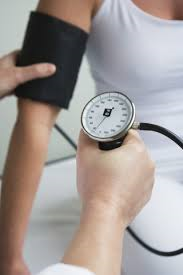By Dr. John A. Papa,
DC, FCCPOR(C)
Hip pain often limits physical activities such as
walking, running, squatting, and going up and down stairs. It can also create problems with sleeping and
sitting positions.
 Depending on what the source of the hip pain is, symptoms can be felt in a number of different regions which may include: the low back, deep in the hip joint, on the
outer aspect of the hip, in the groin, at the front of the thigh, and in the
buttocks. Listed below are some of the conditions
that commonly cause hip pain:
Depending on what the source of the hip pain is, symptoms can be felt in a number of different regions which may include: the low back, deep in the hip joint, on the
outer aspect of the hip, in the groin, at the front of the thigh, and in the
buttocks. Listed below are some of the conditions
that commonly cause hip pain:
· Osteoarthritis results from the protective layers of cartilage in the hip becoming worn over a period of
time, leading to change in the composition of the bone underneath the
cartilage.
· Osteoporosis is a disease of bones that decreases bone mass and strength, making
them more fragile and susceptible to fracture.
Hip fractures usually occur in older individuals after a fall injury.
· Ligaments are tough
bands of fibrous tissue that connect one bone to another. They help stabilize joints, preventing
excessive movement. Ligament injuries (sprains) can occur when these structures become over-stretched
or torn, often during activities where there is a direct blow to the hip or
there is an awkward fall or twisting motion involving the hip.
· Tendons are strong tissues that anchor muscles to bones, and these structures can become over-stretched or
inflamed around the hip joint leading to tendonitis
and muscular strains.
· Bursitis can involve several
fluid-filled structures in your hip that help provide more cushioning in the
joint. Repetitive hip strain and blunt
trauma to the hip bursa are two common causes of bursitis.
· Injuries and conditions in the
low back can radiate symptoms into the hip region. This includes things such as osteoarthritis, sprains and strains, disc
herniations, sciatica, and spinal stenosis.
Below are some useful tips that can help individuals avoid
or minimize the chance of hip pain and injury:
1. Maintain a healthy bodyweight to decrease the overall stress on your hips.
2. Wear appropriate footwear that supports your activities and helps maintain
proper leg alignment and balance.
3. Prepare your hips for physical
activity by stimulating the joints and muscles, and increasing
circulation. This can be accomplished
with a quick cardiovascular warm-up and gentle stretching of the muscles in the
hips, thighs and lower legs.
4. Choose activities that are "hip friendly" for you. This may include low impact activities such as swimming, walking or cycling. Remember to start slowly and build up the
intensity gradually.
5. Strength, balance, flexibility, and core exercises can
train your body to better support your hips and avoid injuries.
If
you have hip pain that limits your daily functioning, you should contact a
licensed health professional who deals in the diagnosis and treatment of hip
pain. For additional information on hip
pain and treatment of muscle and joint injuries,
visit www.nhwc.ca.
This article is a
basic summary for educational purposes only.
It is not intended, and should not be considered, as a replacement for
consultation, diagnosis or treatment by a duly licensed health practitioner.














